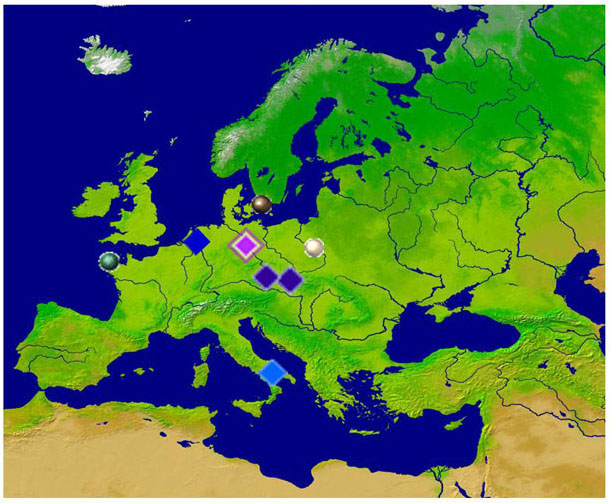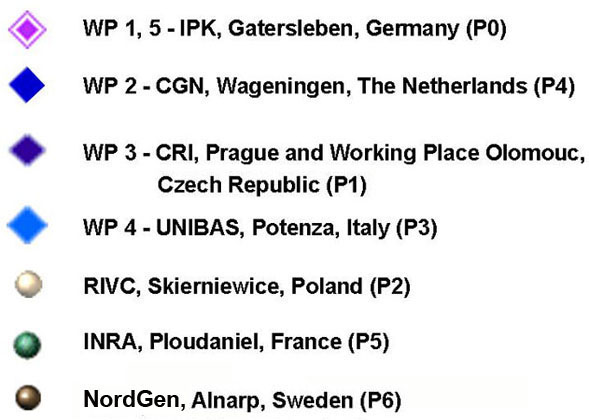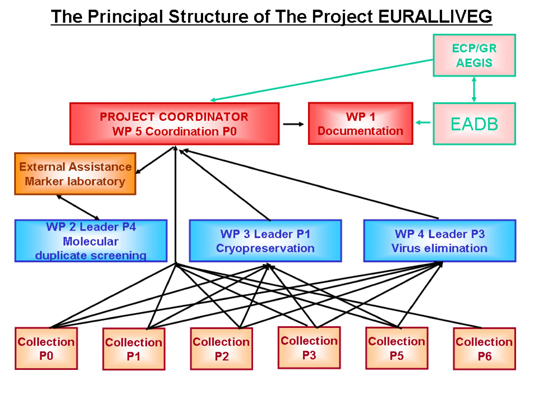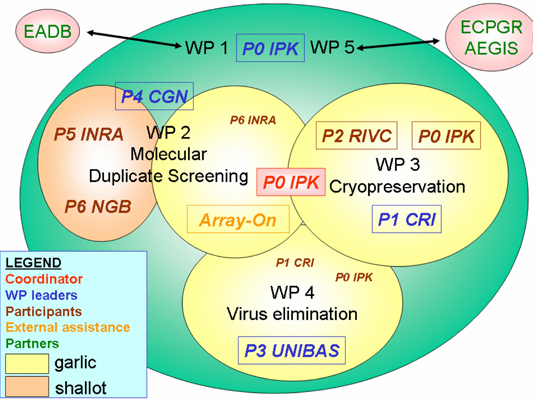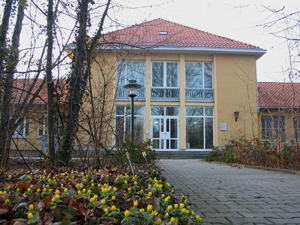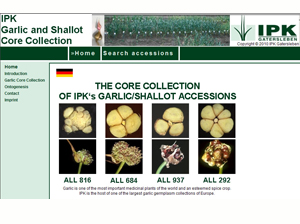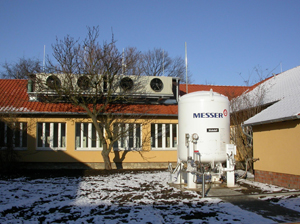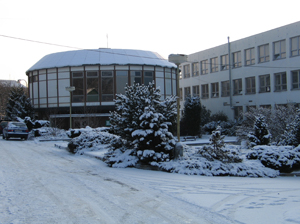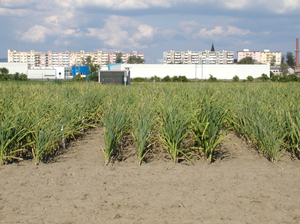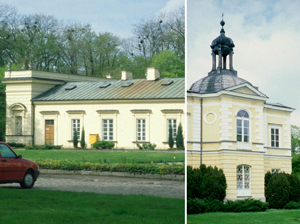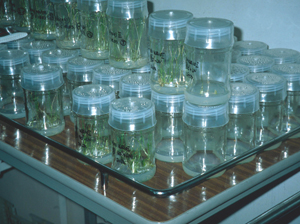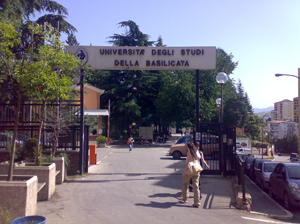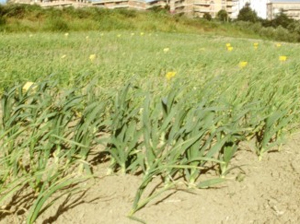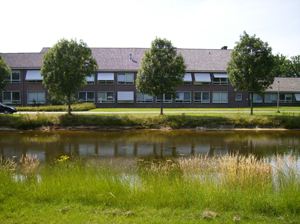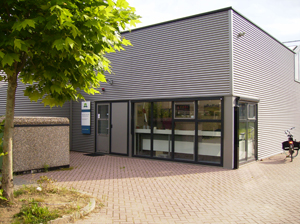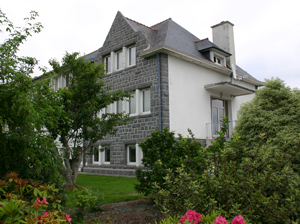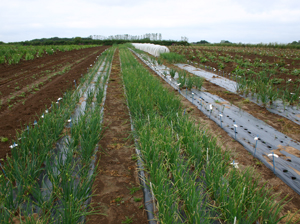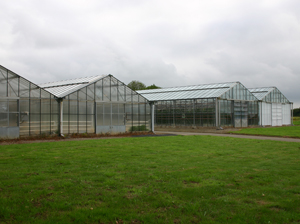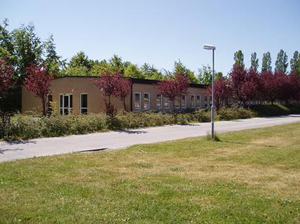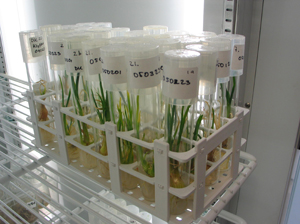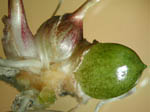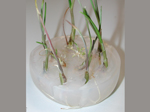Organisation |
|||||||||||||||||||||||||||
|
|
|||||||||||||||||||||||||||
This is the main structure of the project. The coordinator P0 was responsible for the overall management of the action. He was in charge of the financial management, organisation of the project meetings and contacts with Brussels. Furthermore the coordinator was responsible for organising ad hoc activities to solve problems in case milestones and/or deliverables have not been met which could influence the completion of the actions to fulfil the objectives of the project. As the project was ultimately targeted to fit in the European genetic resources strategy, the project coordinator followed the recommendations of ECPGR and organized the project actions as in complement to the AEGIS policy within ECPGR. The project coordinator was in permanent contact with the European Allium Database EADB using its public services through the WP documentation. The project activities were divided into five WPs representing the different steps of the proposed action. Each WP was supervised by a WP leader, responsible for its coordination.
The production of the annual progress reports was a joint action of all partners, which were coordinated on the WP level by the WP leaders and on the project level by the coordinator. The internal part of this website was used by the partners. Every partner was asked to present the results on a bi-monthly basis in the light of the milestones and deliverables agreed. The main feature of the management consisted of the integrated material transfer actions which were the preparative steps to establish the European garlic and shallot base collections. This was the case for all three main WPs. In WP 2, freeze-dried samples of garlic and shallot were sent by all the collection holders to the project coordinator, who handed, after processing the material, it over to an external molecular marker laboratory, which was hired on the base of the external assistance budget. One feature of this European integration process was that this one laboratory applied its services consequently to all European partners. This was necessary to achieve comparability of the results throughout the various collection holders. The leader of WP 2 coordinated this process and intended to draw final conclusions of the structured base collection after agreeing that with all partners. This process was, however, not implemented to our satisfaction. In WP 3, a semi-integrated system of three partners started receiving living material of garlic for cryopreservation from all partners. After successful cryopreservation of the samples, the final step consisted of the exchange of safety duplicates following the strategy of the European AEGIS policy. This final safety-duplicated cryo-collection will then get the status of the European AEGIS-collection of garlic. In WP 4, the laboratory of P3 was active in virus elimination of a selected set of garlic germplasm. It received living material from all collection holders of garlic. The Project partners
P 0 Leibniz Institute of Plant Genetics and Crop Plant Research (IPK) Gatersleben, Germany
IPK Gatersleben is holder of the national German ex situ genebank comprising about 150.000
accessions, amongst them garlic and shallot. It plays an important role in the global
effort to protect the crop resources from genetic erosion. For Allium germplasm, two large field
collections are maintained, and cryopreservation and virus elimination methods are developed and
used for routine storage. The Allium collection is being characterised at the
taxonomic, genetic and molecular levels. The Allium collections of IPK consist of two parts:
the Taxonomic Allium Reference Collection and the Genebank Allium Crop Collection. The Taxonomic
Allium Reference Collection amounts to about 1800 living accessions finally determined which belong to about 320
Allium species and subspecies. The number of original samples is 1500. The Taxonomic Allium Reference Database was established which contains head data
and taxonomic affiliation of more than 3600 definitely determined accessions
which are or were ever present in IPK. It shows up to five pictures per accession.
The genebank Allium Crop Collection consists of 1400 accessions both seed-propagated (onion,
leek, bunching onion, chives, some wild relatives) and vegetatively maintained (garlic, shallot,
great-headed garlic, top onion, hybrids etc.). The main bulk of garlic and other Allium crop
accessions are cultivated in field plots, which are replanted every four years. However, a
special part, IPK's garlic core collection, is replanted annually. Shallots are planted in
spring and harvested in late summer. The leader of the Research Group In vitro Storage and
Cryopreservation (IVC) of the IPK Genebank, Joachim Keller, is Chairman of the ECPGR Allium Working Group. The research group IVC
manages the cryopreservation bank, which consists already of more than 1300 accessions, mainly
potato. The group took part already in an earlier Allium GENRES project. In this project,
first 95 garlic accessions were freed from viruses. The living field collection maintains 950 plots comprising
garlic, shallot, top onions and other vegetative Allium material. The work on morphological
characterization following the Descriptors for Allium was used for implementation of the Garlic and Shallot Image Database. In the research group IVC,
various fundamental questions are investigated using Differential Scanning Calorimetry (DSC) and
microscopic observations. In the taxonomy group of IPK a comprehensive project on Allium taxonomy was implemented for more then ten years
resulting in a new and more detailed infrageneric classification of Allium broadly supported by molecular ITS and rbcL markers.
This includes also infra-specific surveys on garlic by isoenzymes and RAPD's, which are today reference systems for various projects.
P 1 Crop Research Institute (CRI) Prague Ruzyne, Czech Republic
The Centre of Applied Research of Vegetables and Special Crops of the Crop Research Institute,
Department of Genetic Resources for Vegetables, Medicinal and Special Plants, Olomouc is the
holder the germplasm collections of vegetables, medicinal, aromatic and culinary plants (MAPs).
The collections have had very long and rich history in Olomouc since 1951. Currently the department
maintains 9268 accessions of vegetables and 884 of MAPs. The sum amounts to 10152 accessions.
It presents 20 % of all accessions in the Czech Republic. The Department maintains the germplasm
collections of both vegetatively and generatively propagated Allium. The collection of vegetatively
propagated alliums has two parts - garlic and shallot. The collection of garlic is divided to
three parts according to their ability to produce scapes: group of bolting garlic: 327 accessions,
group of non-bolting garlic: 212, and group of semi-bolting garlic: 108 accessions. The actual
collection comprises material from 30 countries of origin. The important part of the collection
represents the old garlic landraces collected in the White Carpathian Mountains and in Southern
Moravia as well as the advanced Czech varieties. Wild Allium species and primitive forms of garlic
from Central Asia and Siberia were collected during international collecting missions in the
Central Asia (1988) and West Siberia (1990). The shallot collection has 124 accessions. From
2002, all collections have been described according the Descriptors for Allium.
Passport data of collections are on-line available on the web application EVIGEZ (Catalogue of
Plant Genetic Resources in the Czech Republic). The
passport information is included also in the ECPGR European Allium Database. The collection
cooperates with other genebanks within the framework of ECPGR and takes part in national and
international projects.The task of the CRI groups at Prague and Olomouc is to choose garlic accessions for long-term
cryopreservation. The material from field collection at Olomouc was transferred to in vitro
culture, propagated and cryopreserved in liquid nitrogen at Prague. Bulbils were directly cryopreserved
without in vitro phase. Finally the cryopreserved accessions of the partner’s countries were exchanged
for storage as safety duplicates. The main researcher, J. Zámečník, was work package leader for P 3.
The research unit of P 1 is working on two main subjects: drought resistance and cryopreservation in various crops (Allium, potato,
hop, etc.). The group has experience in garlic cryopreservation and uses high technology for research
(Differential Scanning Calorimeter). In CRI, special molecular methods are used for plant pathogens
identification. The branch Olomouc of the genebank maintains the largest European garlic
field collection. There a long tradition was accumulated including the world's first successful
virus elimination reports of garlic.
P 2 Research Institute of Horticulture, Division of Vegetable Crops (InHort) Skierniewice, Poland
The Research Institute of Horticulture, Division of Vegetable Crops, is the main research unit in Poland
developing the scientific and practical bases for production of vegetable crops in the field and
under cover as well as for mushrooms. Most of the research work carried out at InHort, Division of Vegetable Crops, is related to
priority areas of agricultural research defined by the Ministry of Agriculture and Rural Developments
including the following subjects: genetics, breeding and biotechnology; technology of vegetable
production in open field, under cover and mushroom growing; plant protection against diseases, pests
and weeds; technology of vegetable storage, processing and evaluation of quality and biological
value. The Institute is responsible for the programme of plant genetic resources of vegetable crops
in Poland, which is a branch of the national genebank. This programme includes the seed collection
of around 10,000 accessions representing genetic resources of 70 vegetable species and maintaining
over 1700 accessions of vegetatively propagated species in field collections. The group under the
curator Teresa Kotlinska is responsible for a large collection a various vegetables.
The collection of genetic resources of garlic (Allium sativum L.) was established in 1986.The base
collection includes 448 accessions of garlic: 212 non-bolting garlic accessions suitable for spring
growing season and 236 accessions of bolting garlic for autumn growing season. The garlic accessions
originated from 23 countries. The collection of garlic germplasm consists of two parts: 1) collection
of garlic landraces located in southern part of Poland and 2) collection of garlic clones derived
from landraces located in Skierniewice. The accessions of garlic, after initial multiplication, are
included in 3-year trials (3-4 replications) to characterise and evaluate their economic value.
After a 3-year research cycle, the accessions are maintained in the field collection in one replication
(50-100 plants per accession). Characterisation is conducted according to the Descriptors for Allium developed by IPGRI. The team attended the first Allium GENRES project as an associated guest.
P 3 Dipartimento Scienze Sistemi Colturali, Forestali e dell’Ambiente, Universitŕ degli Studi della Basilicata
The University of Basilicata is holder of national Italian Allium germplasm. It consists of traditional crop
varieties, generally known as ‘landraces’, ‘farmer varieties’, ‘local varieties’, and ‘primitive varieties’
that have been continuously maintained by growers within their local biological, cultural and socio-economic
context. The vegetative propagation habit of garlic has been contributed to enhance the biodiversity of
the species especially in Southern Italian variegated lands. At this moment the Italian garlic collection
comprises more than 110 accessions collected mainly in Basilicata, Apulia, Calabria, Sicily, Sardinia and
Campania regions and some of them have been acquired in the other Italian regions or, in some cases,
from abroad.The aim of the project action was to apply meristem culture and micropropagation to a selected
set of the most important
garlic accessions to obtain new virus-free plants. The material so far obtained will be further compared with still
infected plants using screen-house cultivation and field trials. Vito Miccolis was the work package leader for virus elimination.
In his group research is conducted on vegetable cultivation in open areas and greenhouse management, solarization,
mulching techniques and soil-less horticulture. The group works in close collaboration with the virologists Ippolito Camele
and Gian Luigi Rana. Field performance of the plants will be tested later by Vincenzo Candido.
P 4 Centre for Genetic Resources, the Netherlands (CGN)
CGN is the Dutch national genebank. It considers conservation, development and
utilization of biodiversity in agriculture of pivotal importance for global food security and for a
sustainable agriculture. CGN has a skilful staff and excellent research facilities. In the project,
CGN used resources for executing tasks on molecular marker analyses. Chris Kik was the leader of WP 4. He
is head curator of the Dutch national genebank and has extensive experience in molecular marker
analyses and project management. Concerning molecular marker analyses he conducted research in the
area of the development of genetic marker maps and the analyses of the genetic basis of agronomically
important traits. Also he carried out molecular marker analyses in relation to genetic resources.
P 5 UMR-APBV 0118 Domaine de Keraďber (INRA) Ploudaniel, France
The Joint Research Unit for Plant Genetics and Biotechnologies (UMR-APBV) of INRA, Agrocampus Ouest and
University of Rennes 1 is located at three sites in Le Rheu, Rennes and Ploudaniel. A total of 130 people
are employed in the UMR-APBV among which 30 % are researchers and engineers. The aim of the UMR-APBV is
to obtain, communicate and exploit knowledge of the genetics, genomics and postgenomics of major crops
(rapeseed, pea and potato). The activities of the UMR-APBV include the development and protection of
biodiversity, the identification of genetic determinants for characters of agricultural interest, the
transfer of results obtained from model species (Arabidopsis, Medicago truncatula, rice), and the assessment
of the impacts resulting from the breeding innovations. The research that is conducted in Ploudaniel
focuses on genetics, breeding and genomics for disease resistance in potato. The steps in the process
include exploitation of genetic resources, study of the genetic factors involved in disease resistance,
study of the durability of these genetic factors, development of molecular markers useful in marker-assisted
selection. The research team is also responsible for genetic resources conservation of different vegetatively
propagated species: potato and its related species, shallot and garlic, Tulipa and Gladiolus and of Brassica
species. The Allium collection maintained in Ploudaniel consists of French garlic and shallot landraces and
varieties. It is vegetatively propagated in the field. Passport data of these genotypes are available in the
ECPGR Allium database. The accessions have also been characterised for a few plant descriptors. The researcher
and collection curator Florence Esnault has long-standing breeding experience, e. g. in shallot. She
is in charge of the French Allium collection and of molecular characterization of the Solanum collection.
P 6 NordGen, Alnarp, Sweden
The Nordic Genetic Resource Center (NordGen) is a Nordic organization dedicated to the safeguarding and
sustainable use of plants, farm animals and forests. The Nordic countries have been co-operating for more
than 30 years on conservation of genetic resources. NordGen was established in January 2008 as a result of
a merger between the Nordic Gene Bank, the Nordic Gene Bank Farm Animals and the Nordic Council for Forest
Reproductive Material. NordGen is mainly financed by the Nordic Council of Ministers.represents the Northern
part of Europe, its five members Denmark, Sweden, Norway, Finland and Iceland. NordGen’s primary task is to
contribute to securing the broad diversity of genetic resources linked to food and agriculture. This is done
through conservation and sustainable use, solid documentation and information work and international agreements.
Our goals are to secure genetic diversity for agriculture and forestry in the Nordic countries and to promote
in a visible, pro-active and effective way, the Nordic co-operation on sustainable conservation and use of
genetic resources for agriculture, forestry and food production. NordGen runs the genebank for seeds and seed
potato for the five Nordic countries (Sweden, Denmark, Norway, Finland, and Iceland). The Nordic collaboration
is carried out by crop-specific working groups with specialists from each nation. In total there are more than
30,000 unique seed accessions maintained in NordGen’s seed collection. The collection is split into two
components, the ordinary collection and the special collections. The ordinary collection consists of breeding
lines, old landraces and cultivars and their wild relatives, while the special collections consist of material
derived from different research projects. The collections of the Nordic vegetative alliums are in responsibility
of the national programs. These Allium accessions are kept in national clonal archives run by each nation.
NordGen facilitates a back-up of in vitro material of shallots and some other crops. NordGen has high input
in international collaboration for germplasm preservation in Europe and elsewhere.
|
|||||||||||||||||||||||||||
EURALLIVEG - Organisation |
|
|
|
|
|
|
